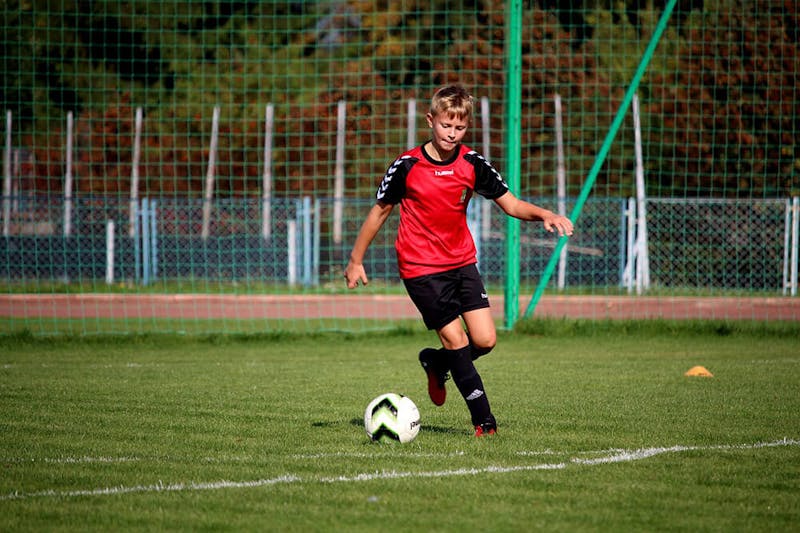
In the United States, nearly 30 million children and teens, ages five to 14, participate in organized sports or other recreational activities. With so many young people playing sports, it’s no surprise injuries happen; however, it may come as a surprise to know that more than 3.5 million children are injured every year in sports. While contact sports, like football, are inherently more dangerous,
Let’s take a look at some statistics from John Hopkins Medicine, regarding sports injuries and children:
- Of the 3.5 million children that sustain sports-related injuries every year, 775,000 are treated in hospital emergency rooms.
- The majority of sports-related injuries are a result of falling, being struck by an object, colliding with a player or piece of sports equipment, or becoming physically overexerted.
- Sports and other recreational activities contribute to 21 percent of all traumatic brain injuries among children in the United States.
- While death from a sports injury is rare, the leading cause of death is a brain injury.
- Of the head injuries sustained, 50 percent occur during bicycling, skateboarding, or ice skating.
As a parent, you may be curious about the sports that present the most opportunity for injury, what a brain injury looks like and can do, and what you can do to protect your child.
What Sports and Activities Present the Most Risk of a Head Injury?
While sports can teach children about teamwork, leadership, and sportsmanship, there can be consequences associated with participating. The following sports are the most dangerous, based on injuries treated in hospital emergency rooms.
- Football. Nearly 215,000 children are treated every year in emergency rooms for football-related injuries. The contact aspect of the sport contributes significantly to the number of injuries. Children can also be injured during practices if they aren’t wearing the proper padding.
- Cycling. Most cycling injuries, unsurprisingly, occur because the cyclist was not wearing a helmet. More than 200,000 children are treated for bicycle injuries every year.
- Basketball. Most basketball injuries, like football, are related to player-to-player contact. More than 170,000 children are treated annually for injuries related to basketball.
- Baseball and Softball. Injuries related to this sport often result from impact with equipment. Nearly 110,000 children are taken to emergencies rooms every year for baseball or softball injuries. Baseball also has the highest fatality rates among children’s sports, as three to four players die from related injury each year.
- Soccer. Injuries sustained while playing soccer occur as a result of player-to-player contact and equipment accidents. About 88,000 children were treated in hospitals for soccer-related injuries.
What Are the Signs of and Symptoms of a Brain Injury?
If your child has been injured on the field, you may want to look out for the following signs and symptoms, especially if they were struck in the head. While these symptoms are not always indicative of a brain injury, your child should be evaluated by a healthcare professional if they exhibit any of the following:
- Headache
- Nausea
- Dizziness
- Sensitivity to light
- Trouble concentrating
- Memory loss
- Double or blurred vision
- Sleep disturbances
- Confusion
- Depression
- Feeling foggy or tired
In the event of a serious head injury that requires emergency medical treatment, your child may also present the following signs and symptoms:
- Facial bruising
- Convulsions
- Changes in pupil size
- Lightheadedness
- Loss of consciousness
- Severe headache
- Slurred speech
- Stiff neck
- Vomiting
- Fluid draining from nose, mouth, or ears
It’s imperative to head to the emergency room if your child is injured playing a sport and experiences the extreme symptoms above, as they may have sustained a concussion or more severe traumatic brain injury.
How Can Brain Injury Risk Factors Be Reduced?
As a parent, it’s natural to want to protect your child. If you’re concerned about the possibility of a brain injury while they play sports, there are steps you can take to reduce the risk factors. First off, it’s essential to ensure they have gear that has appropriate approval ratings and is known to be protective. You’ll also want to make sure their helmet is appropriate for the sport they’ll be playing and fits them properly. Encourage them to always wear their helmet while participating.
Some additional measures you can take to reduce the chances of your child sustaining a head injury are:
- Making sure your child’s play areas and equipment are safe and in working order
- Avoiding letting your child play sports that are inappropriate for their age or skill level
- Supervising your child when they’re playing sports
- Teaching your child how to properly use sports equipment
- Avoiding letting your child cycle on uneven surfaces
- Discouraging your child from playing sports when tired or ill
- Making sure your child wears light-reflecting clothing when riding a bike at night
If you believe your child’s brain injury resulted from the negligent actions of someone else, you may be able to take legal action. To review your case and discuss your claim possibilities, contact our Little Rock personal injury lawyers for a free initial consultation. We’re dedicated to helping accident victims when they need it the most.

